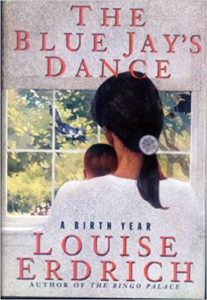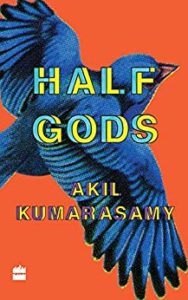Louise Erdrich “The Blue Jay’s Dance”
 Novelist Louise Erdrich’s The Blue Jay’s Dance about balancing life as a mother and a writer is a fascinating account. It was written in the mid-nineties but is ever so relevant decades later. There was a lovely essay written in the The Paris Review by Sarah Mekendick on revisiting The Blue Jay’s Dance. It was published on 10 May 2017. It is a book certainly worth reading by many especially new mothers.
Novelist Louise Erdrich’s The Blue Jay’s Dance about balancing life as a mother and a writer is a fascinating account. It was written in the mid-nineties but is ever so relevant decades later. There was a lovely essay written in the The Paris Review by Sarah Mekendick on revisiting The Blue Jay’s Dance. It was published on 10 May 2017. It is a book certainly worth reading by many especially new mothers.
There are many passages that are beautifully written encapsulating the new life women professionals find themselves plunged into with the birth of a child. Two really stand out. These are:
To keep the door to the other self — the writing self — open, I scratch messages on the enevelopes of letters I can’t answer, in the margins of books I’m too tired to review. On pharmacy prescription bags, dime-store notebooks, children’s construction paper, I keep writing.
(p.5)
and the second is:
Most of the instruction given to pregnant women is as chirpy and condescening as the usual run of maternity clothes — the wide tops with droopy bows slung beneath the neck, the T-shirts with arrows pointing to what can’t be missed, the childish sailor collars, puffed sleeves, and pastels. It is cute advice — what to pack in the hospital bag (don’t forget a toothbrush, deodorant, a comb or a hair dryer) — or it’s worse: pseudo-spiritual, misleading, silly, and even cruel. In giving birth to three daughters, I have found it impossible to eliminate pain through breathing, by focusing on a soothing photograph. It is true pain one is attempting to endure in drugless labor, not “discomfort,” and the way to deal with pain is not to call it something else but to increase in strength, to prepare the will. Women are strong, strong, terribly strong. We don’t know how strong we are until we’re pushing out our babies. We are too often treated like babies having babies when we should be in training, like acolytes, novices to high priestesshood, like serious applicants for the space program.
(p.11-12)
28 November 2018

